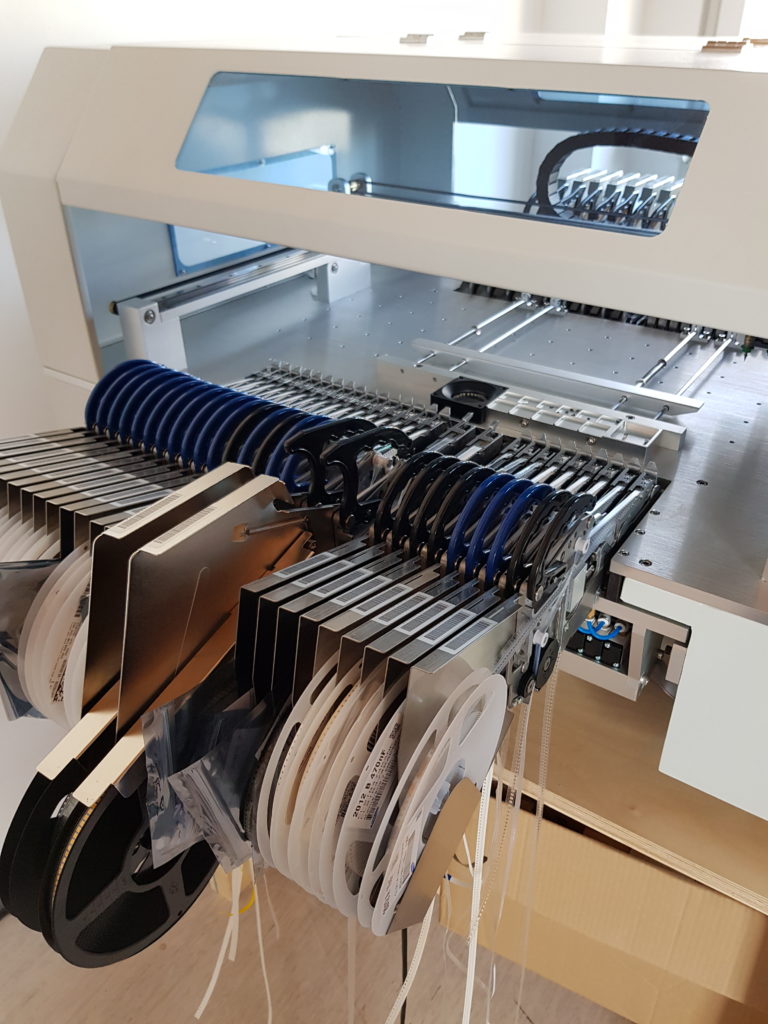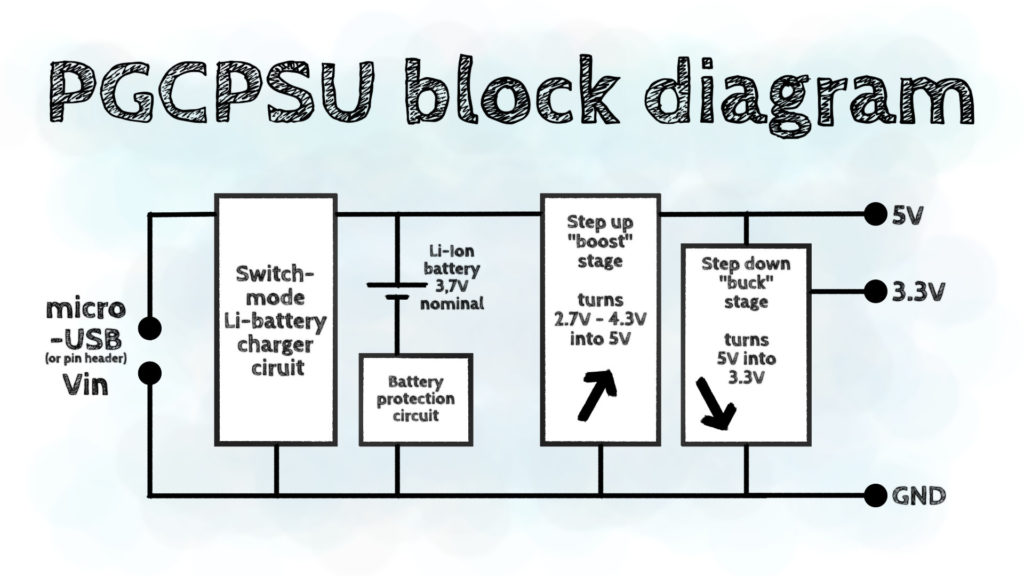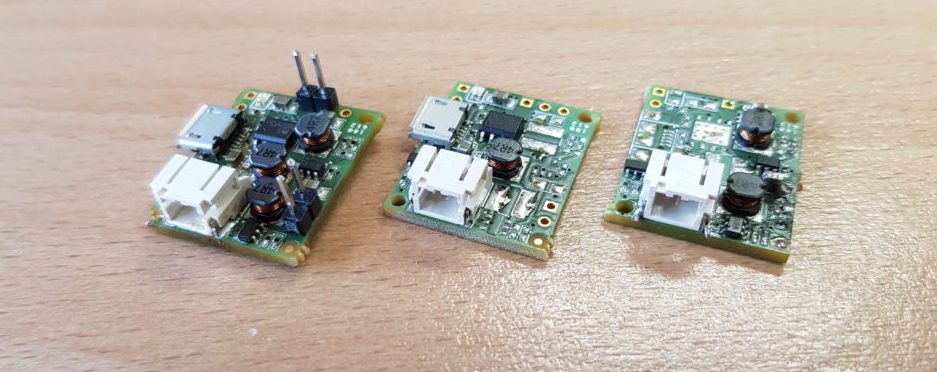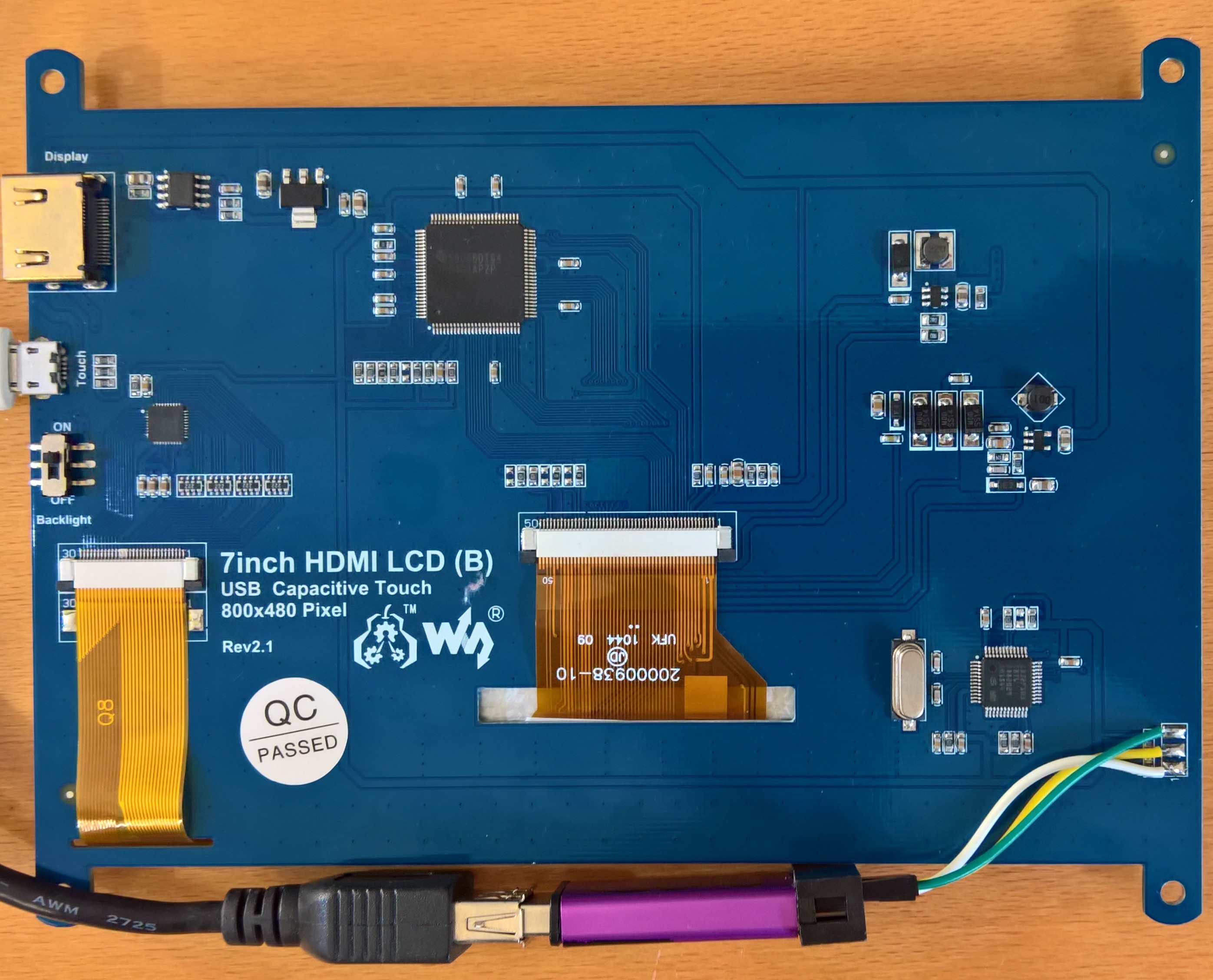TL/DR: have a look the PGCPSU here: PGCPSU on Kickstarter (funding until May 3rd.
Among the many things we did in 2018 was founding our company “Staudt Technologies GmbH” to manufacture and market our first ever product called Luccia. Luccia is a wireless nightlight type product with motion sensors and a nice design. But that’s not what this post is about: while setting up our manufacturing we bought this nice pick and place machine:

As neither of us ever had a hands-on experience of any sort with this kind of equipment, we decided to spin a test-run board using mostly cheaper components in the same footprints that we were to use later on.
Reusing power supply sections out of previous projects we ended up with a 5x5cm board having a three switch mode converters on it:
- a buck stage lithium battery charger
- a boost stage to provide a 5V rail
- …on which another buck stage is attached to deliver 3.3V

Out of ten PCBs we had to cut our teeth on the machine, seven were “bin grade” half-populated messes, but the three remaining ones were actually usable. Even surprisingly good from a technical perspective.
As the PCB we had to populate for Luccia had a higher density, we re-spun the PGCPSU in its second revision, shrunken down to just 25x20mm. And it still was great.

Some technical insight
All three switch mode stages employ my favourite SMPS technique of recent years: synchronous conversion. This means that instead of having a Schottky diode somewhere in the circuit, the same IC integrates a pair of back-to-back MOSFETs forming an “ideal diode” circuit which is driven “in sync” with the power switch.
This is great because it eliminates the forward voltage drop of the diode allowing higher efficiency at low loads. For the PGCPSU it has the bonus points of having fewer components to fit on the tiny board.
The projects the power supply stage circuits came from were rather low power, maxing out at roughly 100mA each, which is why the PGCPSU is highly efficient below that range. On the other hand the “sacrifice” was a rather low maximum load capability
So, “Kickstarter” I said.
While I didn’t design the PGCPSU to sell it, I planed ahead for that opportunity while preparing the second iteration. I brainstormed for a crappy name, added the “by hhtronik.com” (we have big plans for that “brand” actually) on the silkscreen, as well as some indications for the in- and outputs.
Of the nine boards I build in the first real PGCPSU “batch”, five were actually usable in the end (read: complete and not heavily modded for testing purposes). These actually underwent real-life testing in a number of “hacking DIY projects” by family members or myself.
We put it in DIY home automation WiFi sensors (soil moisture, temperature). We attached it to anything we needed power on the go. Arduinos, Raspberry PIs (Zero W), Bluepill boards etc. And it performed great. As
What happened then
Fast forward March 2019, I finally found some time to write up the campaign, make some fancy charts and some comparative benchmarking.
On April 3rd the campaign went live. And within hours the first 10 pledges were in: Oo Then, just four days into the campaign we hit the (lowly) funding goal of 1250€.
The most amazing experience about all of this has been the super nice response of big blogs like CNX-Software and Geeky-gadgets who listed the campaign super quickly (like in “sub-1h-quickly”), which is really amazing!


